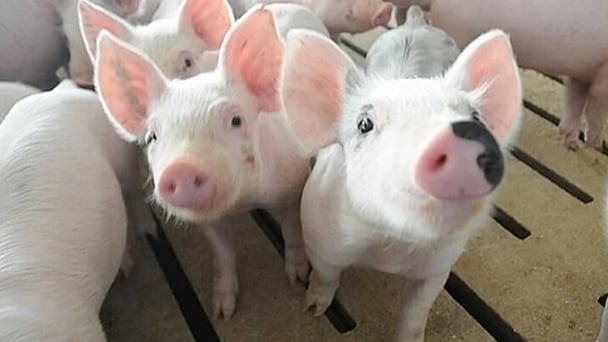May 21, 2025 | 07:46 GMT +7
May 21, 2025 | 07:46 GMT +7
Hotline: 0913.378.918
May 21, 2025 | 07:46 GMT +7
Hotline: 0913.378.918

Rice harvesting in Long An province. Photo: Son Trang.
The Directorate General of Foreign Trade of India recently issued a complete ban on the export of all plain white or non-Basmati rice varieties. Accordingly, India's significant ban came into effect from the signing date of July 20, 2023.
The Indian government has listed several causes for the issuance of this ban. Namely, the retail price of rice in the Indian domestic market has increased by 11.5% within the past twelve months and by 3% compared to the previous month. On the other hand, the total rice production area in India is estimated to have lowered by 6% compared to the same period in 2022 due to unfavorable weather conditions.
The Import - Export Department under the Ministry of Industry and Trade of Vietnam assessed that India's ban on rice exports will affect the global rice trade market because this country accounts for at least 40% of the total global rice exports. India's rice exports reached a record level of 22.2 million tons in 2022. This figure exceeds the total export volume from Thailand, Vietnam, Pakistan, and the United States, which are the four countries that export less rice compared to India. Additionally, nearly half of the total rice export volume, or 10.3 million tons, is made up of the recently banned rice varieties.
Major rice exporting countries around the world are closely monitoring the global rice market in response to India's ban. According to the Bangkok Post, Mr. Chookiat Ophaswongse, honorary president of the Thai Rice Exporters Association, commented that India's ban can potentially raise global prices. Consequently, Thai rice millers and exporters will suspend their orders. In addition, the price of commodity rice in Thailand will increase by 10% as a direct result of this ban.
Immediately following India's ban on the export of non-Basmati rice, the Import - Export Department under the Ministry of Industry and Trade of Vietnam issued an official dispatch to the Vietnam Food Association (VFA) and rice export traders, requesting coordination in stabilizing the consumption of rice, commodity rice, stabilizing domestic rice prices, and ensuring food security.
Namely, the Import - Export Department requested the VFA to encourage major businesses such as Vinafood 1, Vinafood 2, etc. to organize the purchase and consumption of rice, and secure output for rice farmers. Furthermore, the Import - Export Department requested rice exporters to strictly comply with the Government's regulations on rice export businesses, regularly maintain the minimum circulating rice reserve level as prescribed, ensure the balance of export and domestic consumption, and contribute to stabilizing rice and rice prices in the domestic market.
The transaction price of Vietnam's rice exports increased rapidly within the last week. According to the VFA, Vietnamese 5% broken rice was priced at 533 USD per ton, and 25% broken rice was priced 513 USD per ton on July 20. As a result, the prices of all rice exports increased by 25 USD per ton compared to the beginning of July.

Ripe rice from the 2023 summer - autumn crop. Photo: Son Trang.
The price of Vietnamese rice has continuously climbed in recent years, mainly due to the high demand from various countries around the world. On the other hand, the supply of raw rice in the Mekong Delta is currently limited because harvest for the winter-spring rice crop has ended since April, whereas harvest for the summer-autumn rice crop has recently begun in some provinces.
Rice farmers in Long An province, one of the provinces with the largest rice production area in the Mekong Delta, have recently started harvesting the 2023 summer-autumn crop. According to Long An province's Department of Agriculture and Rural Development, Long An province planted 217,164 hectares of rice for the 2023 summer-autmn crop, which is equal to the amount planted in the 2022 summer-autumn crop. So far, multiple summer-autumn rice fields in Tan Thanh, Tan Hung, Vinh Hung, Moc Hoa districts and Kien Tuong town have been harvested for an average yield of 6 tons. The total harvested area is approximately 41,000 hectares, with an expected output of over 271 thousand tons.
According to rice traders, the current limited supply of rice in combination with India's ban on rice export will boost the production of raw rice in Vietnam in the immediate future, affecting the overall export price of rice.
Translated by Nguyen Hai Long

(VAN) Coffee prices on May 20, 2025, surged by VND 2,200, climbing to VND 126,000 – 126,700/kg. Meanwhile, global coffee prices also recorded a sharp increase.

(VAN) Pepper prices on May 20, 2025, dropped by VND 1,000 only in Gia Lai, trading at VND 150,000 – 153,000/kg. Global pepper prices remained unchanged.

(VAN) Analysts are watching moves out of Asia, particularly with fertilizer.

(VAN) Pepper prices on May 16, 2025, fluctuated by VND 500–1,000 domestically, trading at VND 151,000 – 152,000/kg. Global pepper prices remained stable.

(VAN) Coffee prices on May 16, 2025, edged up by VND 200, trading around VND 125,900 – 126,200/kg. Meanwhile, global coffee prices are showing mixed movements.

(VAN) Live pig prices on May 16, 2025, continue to remain flat. Live pig prices across the 3 regions are trading in the range of VND 67,000 to VND 75,000/kg.

(VAN) Coffee prices on May 15, 2025, fell sharply by VND 2,500, trading at VND 125,700 – 126,200/kg. Global coffee prices also dropped significantly by 3%.